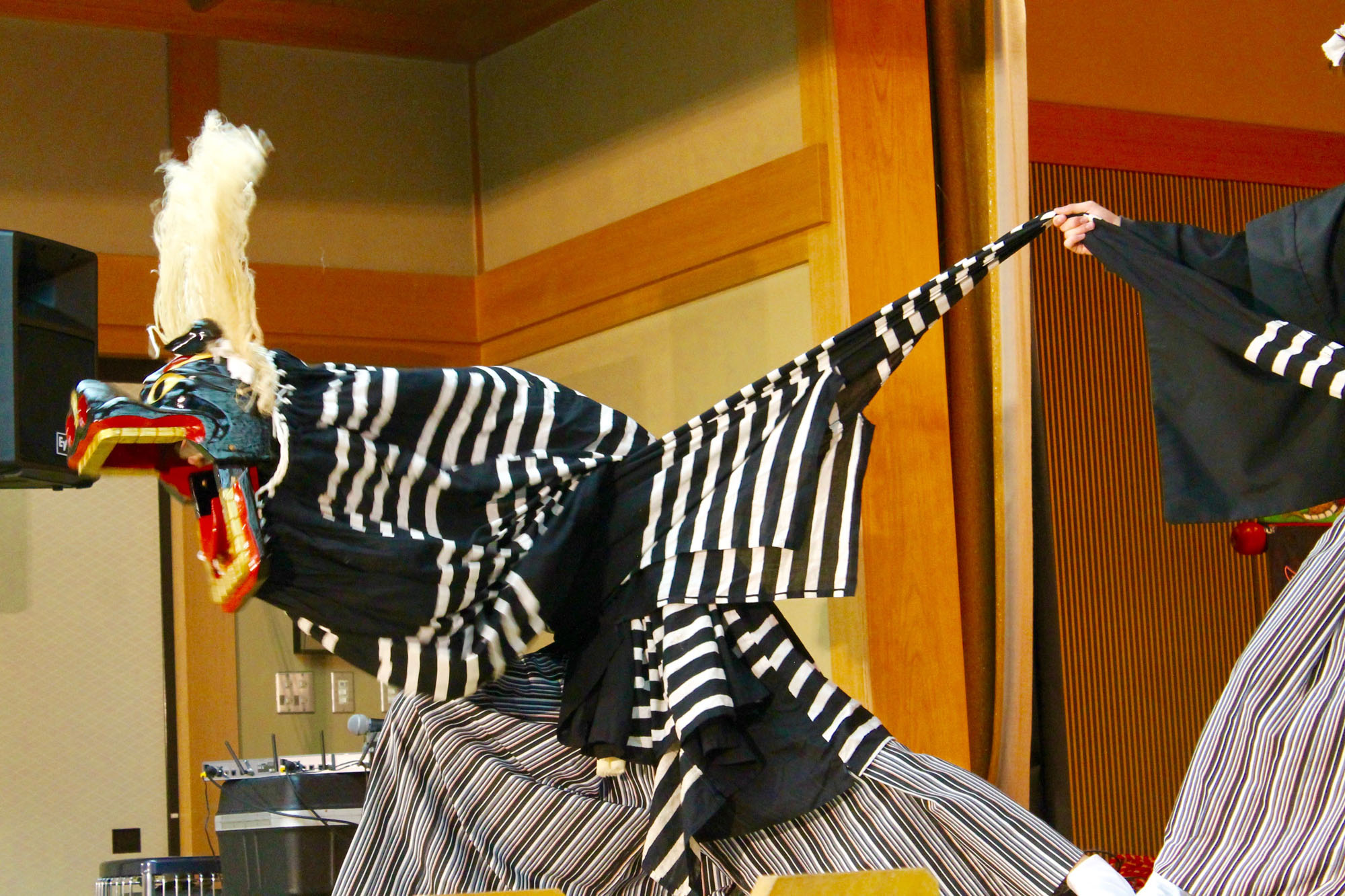Accompanied by the whistling of a yokobue flute and the repetitious pounding of a taiko drum, a performer takes the stage on the grounds of a centuries-old castle's ruins.
On his hands and knees, he bows toward a black lacquered mask baring menacing golden teeth, before standing and disappearing beneath an indigo-dyed cloth that drapes behind it. The shapeless textile suddenly takes on new dimensions, twisting and contorting theatrically as it becomes the body to the snapping jaws of the mask. Known as shishimai (lion dance), the performance involves a dancer wrapping his body in the cloth to embody the form of a wild animal.
Behind the mask is Ryuichi Kimura, a student of kagura (a type of Shinto theatrical dance) who has been training with the Ichikawa Kagura troupe since elementary school. At just 19, he is notably younger than his fellow members, the oldest having recently turned 93. The visible age disparity is not a coincidence — it illustrates a concerted effort by Ichikawa Kagura to pass on the traditions of one of Japan's oldest and most endangered performing arts to a new generation.


















With your current subscription plan you can comment on stories. However, before writing your first comment, please create a display name in the Profile section of your subscriber account page.